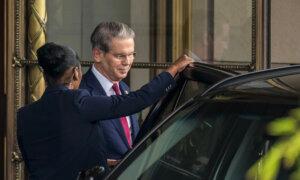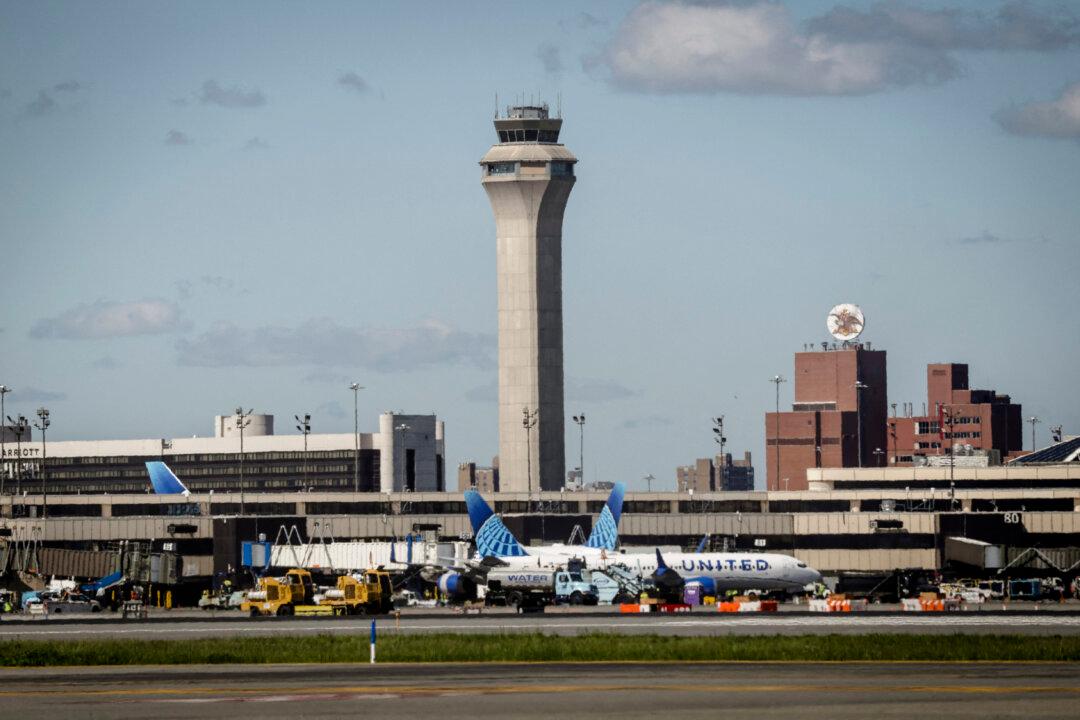U.S. officials on May 11 said they made progress after two days of trade talks with Chinese officials in Switzerland, with details to be released on Monday.
U.S. Treasury Secretary Scott Bessent met with Chinese Vice Premier He Lifeng in Geneva over the weekend to de-escalate trade tensions after the two countries imposed substantial tariffs on each other in recent months.
“I’m happy to report that we’ve made substantial progress between the United States and China in the very important trade talks,” Bessent told reporters. Bessent said that he had informed U.S. President Donald Trump of the progress and that there would be a complete briefing on the morning of May 12.
Bessent in his remarks did not reference a deal or agreement, but U.S. Trade Representative Jamieson Greer, who also participated in the talks, said the negotiations were constructive and concluded with a deal struck with “Chinese partners” to work toward reducing the $1.2 trillion U.S. global goods trade deficit.
“It’s important to understand how quickly we were able to come to agreement, which reflects that perhaps the differences were not as large as maybe thought,” Greer said.
He noted that the Chinese officials participating were “tough negotiators.”
Chinese regime officials in a subsequent news conference described the talks as “candid, in-depth and constructive dialogue.”
Chinese Vice Premier He Lifeng said both sides agreed to “establishing a consultation mechanism” for further discussions on trade and economic issues.
Chinese officials said the two sides would release a joint statement on Monday, though the timing was still unclear.
The discussions marked the first time Bessent, Greer, and He have met in person since the nations, which have the world’s two largest economies, began imposing tariffs far surpassing 100 percent on each other’s imports.
Bessent previously said the bilateral tariffs between the two countries needed to be reduced in efforts toward de-escalation but did not offer further information on potential reductions and did not take questions from reporters.
Discussions between the United States and China could help stabilize the world markets still reeling from the tit-for-tat tariff war between the two nations, with some ships in port with Chinese goods still unwilling to unload until they know the final decision on import tariffs.
The negotiations have occurred behind closed doors.
Multiple convoys of black vehicles have been spotted entering and leaving the residence of the Swiss ambassador to the United Nations in Geneva, which is hosting the discussions intended to de-escalate trade relations between the world’s two largest economies.

Trade between China and the United States totaled more than $660 billion in 2024.
“80 [percent] Tariff on China seems right! Up to Scott,” Trump wrote in a Truth Social post on May 9, referring to Bessent.
The series of talks over the weekend marks the first time both sides have met in person to discuss tariffs amid the ongoing trade war. Even a minimal drop in tariffs could be seen as a breakthrough.
Trump initially imposed a 20 percent tariff on Chinese goods alongside 25 percent tariffs on Mexico and Canada after accusing the three countries of contributing to the illegal trafficking of fentanyl, a powerful synthetic opioid, into the United States.
The president then added additional tariffs on China, which included reciprocal measures, to bring the total levies on Chinese goods to 145 percent.
Trump has also targeted China’s trade deficit with the United States, which reached $295.4 billion in 2024.
Chinese Communist Party leader Xi Jinping visited Russian President Vladimir Putin in Moscow from May 7 to May 10, casting a shadow on hopes that tariff negotiations between the United States and China could lead to broader improvement in relations between the two countries.
Bessent emphasized the national security component of trade negotiations with China.
“I look forward to productive talks as we work towards rebalancing the international economic system towards better serving the interests of the United States.”







